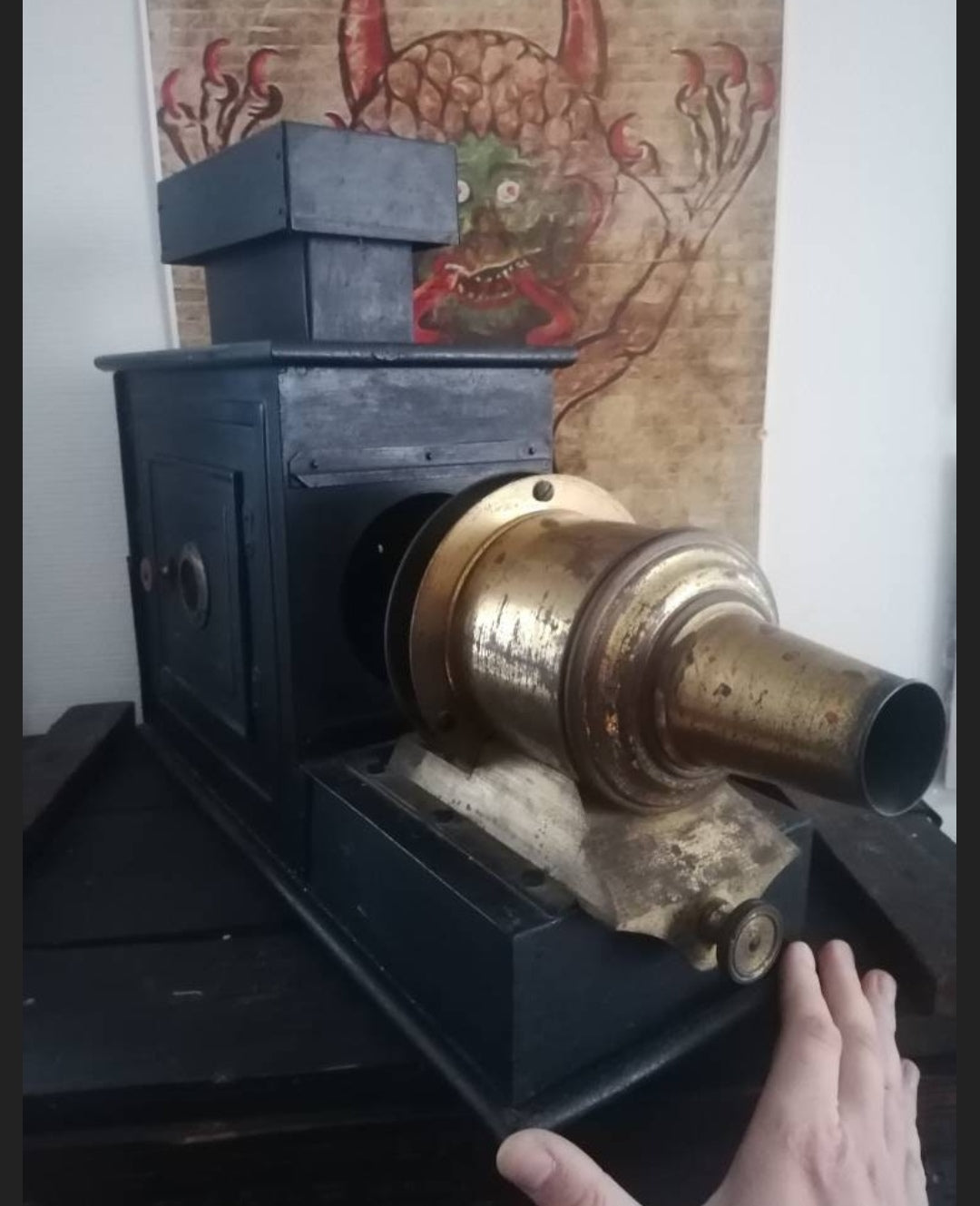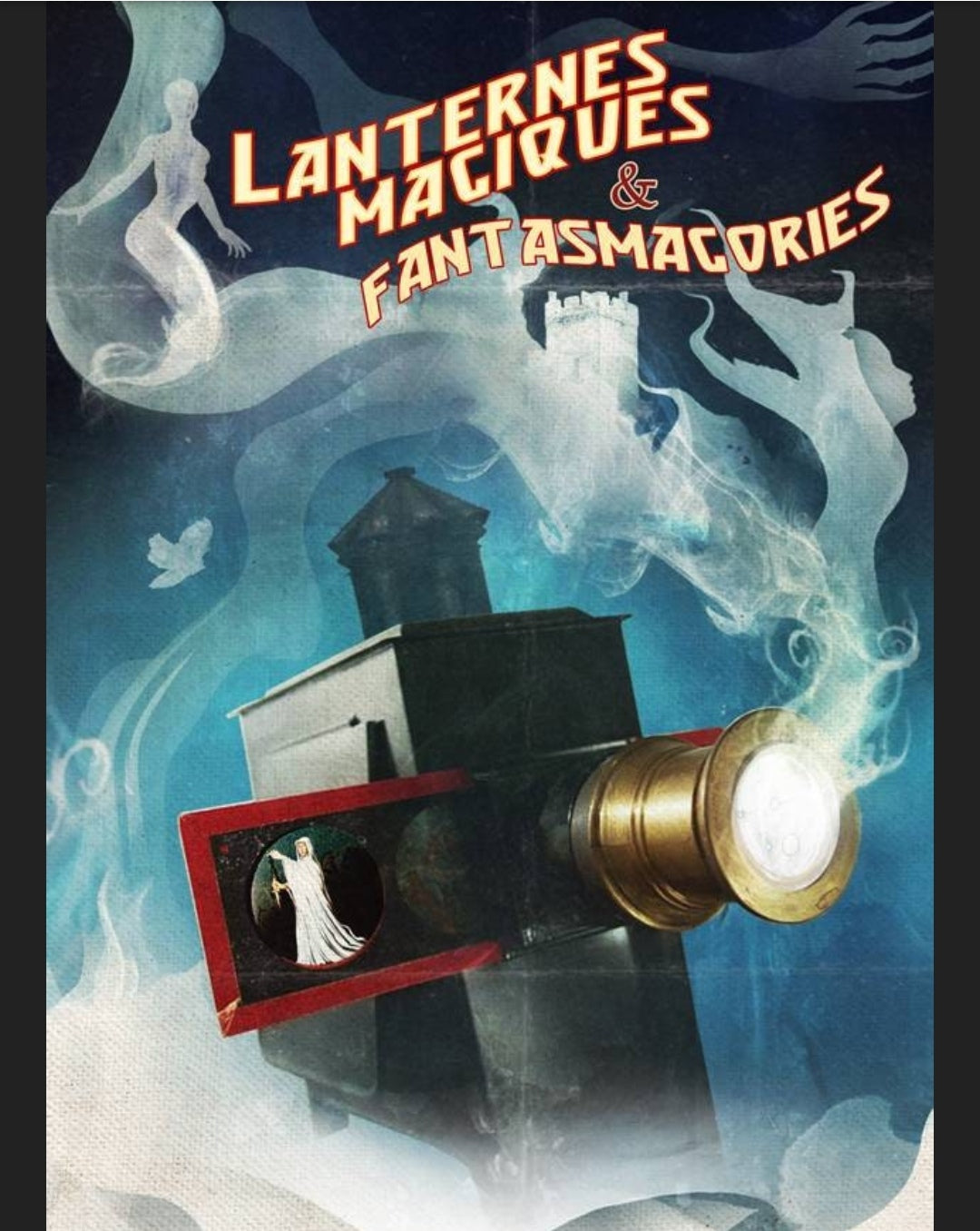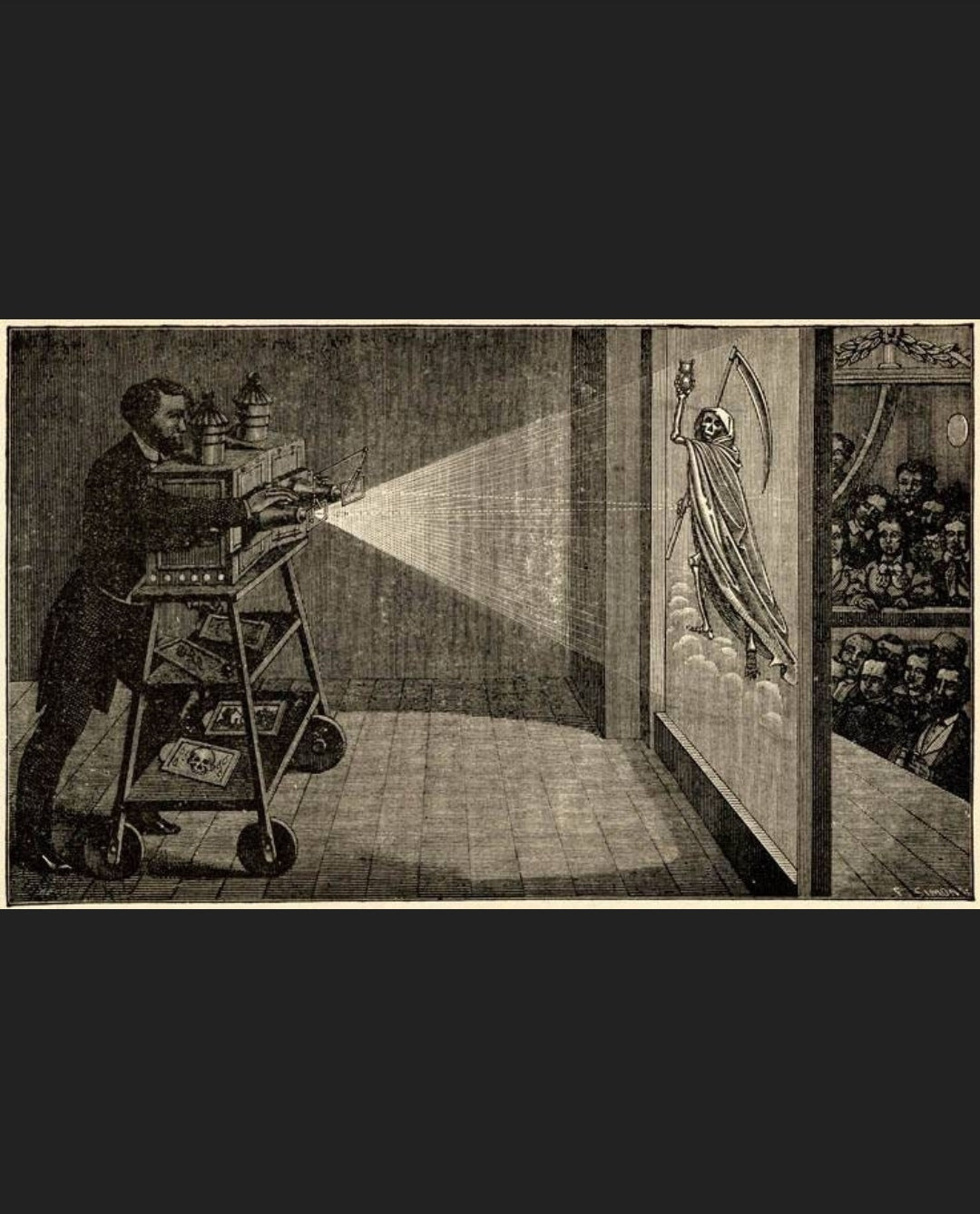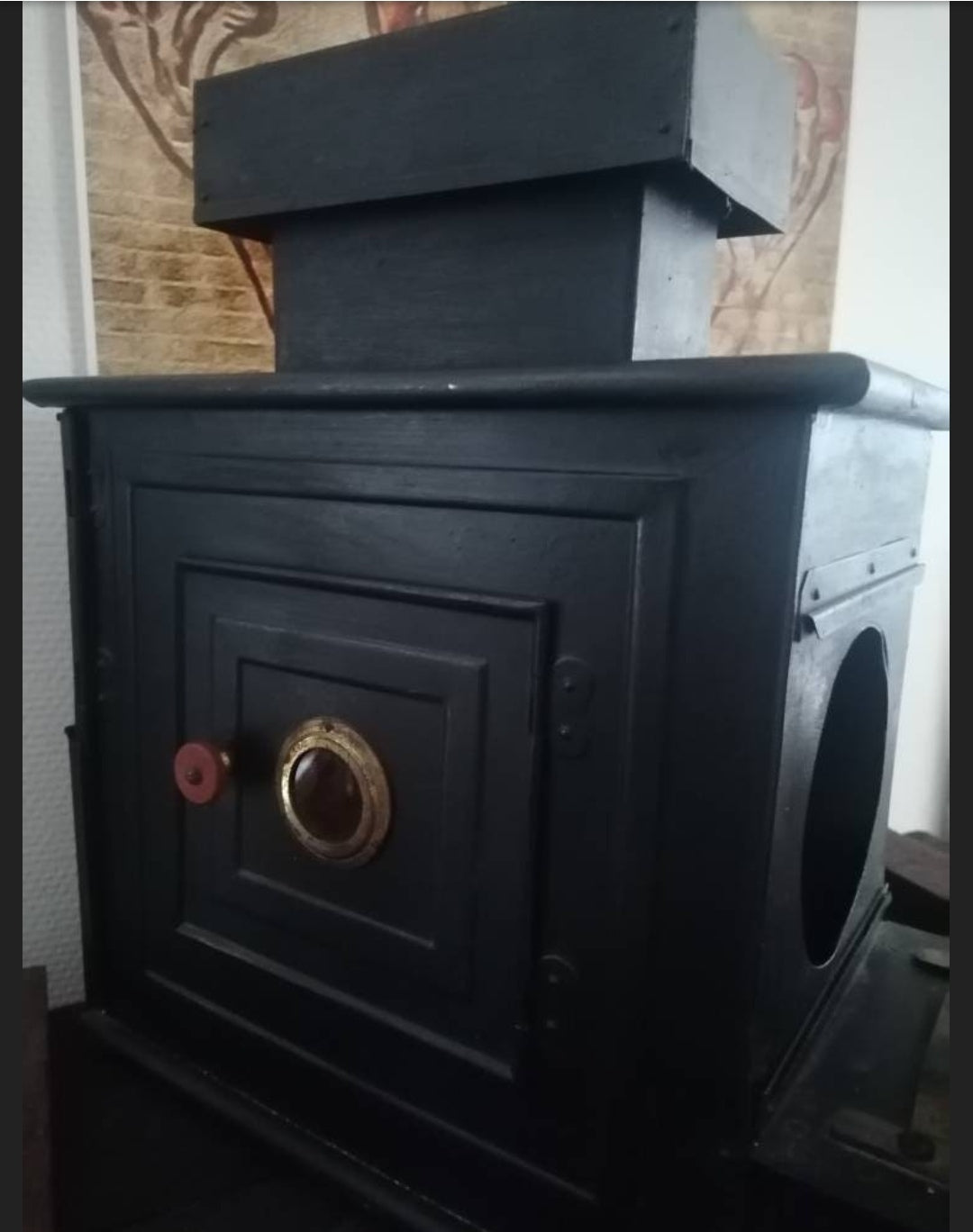Cabinet de Curiosités Henry
Antique Parisian magic / phantasmagorical lantern. Late 18th century.
Antique Parisian magic / phantasmagorical lantern. Late 18th century.
Impossible de charger la disponibilité du service de retrait
Très ancienne lanterne magique / fantasmagorique parisienne. Époque fin XVIIIe siècle.
La lanterne magique est l'ancêtre des appareils de projection et particulièrement du projecteur de diapositives. Inventée au XVIIe siècle par le père Athanase Kircher en Allemagne et par le père De Châle en France, elle permet de projeter des images peintes sur des plaques de verre à travers un objectif, via la lumière d'une chandelle ou d'une lampe à huile. Tout d'abord baptisée « lanterne de peur » par son inventeur, elle est, après plusieurs appellations successives, renommée « lanterne magique » par le jésuite Francesco Eschinardi en raison de la fascination que ses images exercent sur le public. La fantasmagorie , étymologiquement « l’art de faire parler les fantômes en public », consiste à la fin du XVIIIe siècle à projeter et à animer sur un écran de toile ou de fumée des tableaux miniatures peints sur des plaques de verre ou bien gravés sur un support opaque. Diables et fantômes pour effrayer les spectateurs ! Cette forme de spectacle connaîtra un énorme succès au tournant des Lumières.
Very old Parisian magic / phantasmagorical lantern. Late 18th century.
The magic lantern is the forerunner of projection equipment, particularly the slide projector. Invented in the 17th century by Father Athanase Kircher in Germany and Father De Châle in France, it was used to project images painted on glass plates through a lens, using the light of a candle or oil lamp. Initially dubbed the "lantern of fear" by its inventor, it was later renamed the "magic lantern" by the Jesuit Francesco Eschinardi because of the fascination its images exerted on the public. At the end of the 18th century, phantasmagoria, etymologically "the art of making ghosts speak in public", consisted of projecting and animating miniature pictures painted on glass plates or engraved on an opaque support onto a canvas or smoke screen. Devils and ghosts to frighten the audience! This form of entertainment was a huge success at the turn of the Enlightenment.
Carefully packaged by us and sent worldwide with tracking number
Carefully packaged by us and sent worldwide with tracking number







